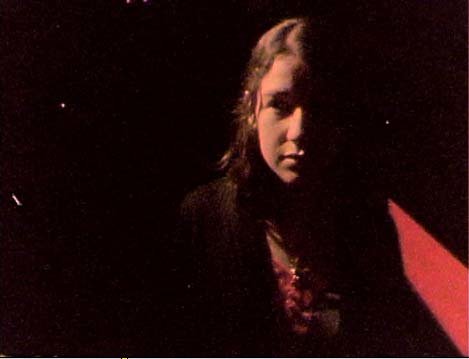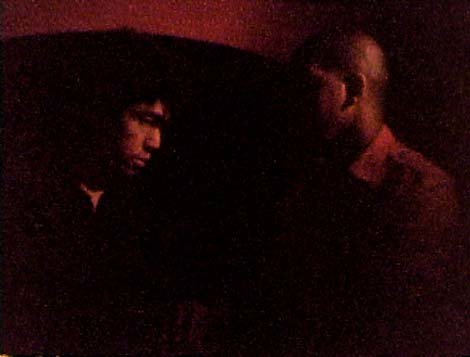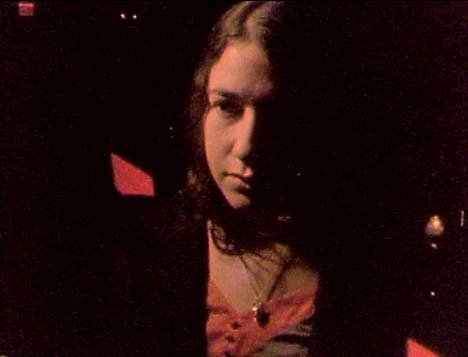
Derek Van Gorder
-
Posts
19 -
Joined
-
Last visited
Posts posted by Derek Van Gorder
-
-
Thanks, Bernie & Ian! I'll give it a try.
-
I acquired a used ACL from ebay. It's definitely a little beat-up, but is in working order.
This is my first 16mm camera, and I'm spending time trying to learn the basics and how to load it properly. I definitely will be getting it properly serviced by a technician before using it on any production.
I ran one trash roll through it. Seems to be working OK, and I don't see any timing problems, but it makes a repeating scraping sound while running. I couldn't quite figure out which part was causing the sound. I recorded a video of it running:
(password = eclair)
Any thoughts on what's causing this? Maybe I just haven't loaded it properly? I wanted to shoot a test roll or two before sending it out, but if you think I risk damaging the camera by running it like this, I could just get it serviced right away.
Thanks.
-
Thanks for the replies! I decided to junk the 160' and practice with it, but my curiosity is getting the better of me with the left-over film and I just might have to process it. What can I say, I'm a sucker for the unknown. If I come up with anything interesting I'll be sure to post it!
-
Hello!
I recently purchased a used Eclair ACL on eBay. It came with two 200' magazines and one 400' magazine (the English one, which I hear is a bit dodgy). To my surprise, both 200' magazines are full of film! The first one appears to be halfway spent, there's film over the pressure plate. The second mag I opened in a darkened room-- the take-up side is empty, but the other side has what I'm guessing is 160' of unexposed Double-X (the magazine is labeled with a piece of tape, "160' 7222"). From what I could tell in the dark, there's indeed a good amount of film on a core, not a daylight spool, and it hasn't been threaded through to the take-up side.
The seller mentioned nothing about any included film, only that the camera had been unused for four years. And I've heard no answer from him about the film...
So, I assume there's a decent chance this is simply trash film, good for practice loading. But I also figure there's a chance the half-spent roll is shot but undeveloped. Is there any way I can tell? Should I bring it to the lab for processing? Should I attempt to shoot the remaining half, or would it be safer to just wind it through?
As for the 7222, I have no clue what condition it's in. I'm assuming there is no chance it is exposed/undeveloped, and I'd be best off just junking it and using it to practice loading-- then once I have the basics of the camera figured out, I can get around to dealing with the half-shot mag. Is this a sensible plan?
Anyway, what would you do in this situation? This is my first 16mm camera. I plan to spend a good long while practicing loading and basic operation, shoot a test roll, then get it serviced, then shoot more test rolls...
-
I am looking to create some fictional documentary pieces styled after old-fashioned science documentaries, in particular Carl Sagan's "Cosmos" from 1980. I'm interested in the approach to location work, visual effects, and graphics. Studying the show itself has been helpful, but I was wondering if there was anywhere I could find behind-the-scenes information about cameras, lenses, lights, film stocks, and effects photography. Failing that, are there any good general technical resources about documentary production from this time period I could study?
Any info appreciated!
-
Hello,
Here is a teaser trailer for a science-fiction film I am working on. It's an outer space adventure movie shot the old fashioned way, without CGI or greenscreen.
Would love to hear some honest feedback and first impressions, from a photography angle and also just whether or not it makes an effective trailer.
-
Well hey, thanks for sharing! Seems like you've done a lot of interesting stuff.
As a fellow shooter the most interesting thing to see was your reel on Vimeo, I really dug it. Most of the time I find a mix of documentary/performance/narrative/commercial distracting, but you managed to make it blend, it's clear you have your own style. And the occasional added sound effect was really effective, pulled me in. Only stuff I wasn't crazy about was the on-white backdrop stuff, lighting was fine, just seemed very middle-of-the-road. Other than that, lots of epic shots; fantastic catch with that lightning bolt in the background.
-
Working on a new reel and was hoping for some feedback. I'm taking a risk with an unusual approach, and am wondering how it strikes people on a cold viewing.
I'm a young DP and editor working the low-budget scene in NYC. For my past reels I would just put what I thought were my best shots to music, but this time around I wanted to try and better communicate coverage, setting, and establishing mood, while still conveying a range of work in different styles and genres. So I decided to incorporate sound design and emphasize certain moments and scenes; giving short impressions of completed films.
This is part and parcel of me trying to expand the scope of my work. I've found a lot of low budget films expect the DP to be more of a "lighting cameraman;" show up with equipment & know-how, and do the best job possible with limited time and resources. But what I want to prove in a narrative reel is my ability to take an active role in pre- and post-production, helping make key choices in art design, coloring, handling the budget, deciding crew positions, and in general taking more responsibility for the finished product.
This is a work-in-progress, so I would really appreciate some honest feedback. In general, do you think this concept of a reel makes sense, or is it inappropriate?
-
Hey, I really liked this. Lots of dramatic action & emotion in a short span of time. Also nice that it shows both good coverage and the ability to tell a story in a single shot. The lighting in general is excellent for this type of material, simple but purposeful-- especially at 0:10 and 0:37.
The only shots I don't like are the two that start at 0:20. They just don't convince me as night shots; the blue fill doesn't seem justified, and we see too much background, it feels staged. Seeing the scene through some foreground, or better use of shadows may have helped. Compare to your other night shots going for a similar feel at 0:57, which I think are much better: kinetic camerawork, and we see just enough background to give texture while preserving a sense of darkness. Feels real to me, despite the dramatic lighting.
Anyway, neat stuff!
-
Really professional stuff. The period work is particularly impressive! I think my favorite shot is the old man with his dog in the fog. Simple but beautiful, shot at the right time of day for sure.
My only complaint is that the music seems best suited for commercial-style work, and it makes the more dramatic narrative shots get lost in the mix. I noticed your older reel on Vimeo grouped projects together, and although that reel was too long, it gave a better sense of coverage for narrative work.
Anyway, great work!
-
Hello,
I'm shooting a feature film on HDSLRs in Utah through the end of August. The director has made an unusual request to shoot a short scene by the actual light of the full moon. I suspect this may be possible only with the 1D Mk IV and super-fast lenses, f/1.0 or faster (even then I assume I will need to employ some noise-reduction in post). Though I've found information about such lenses online (a Canon 50mm 1.0, a TV Nikkor 35mm f/0.9), they seem quite rare and so far the rental houses in Salt Lake City have no idea where to find them.
What's my best bet? Is there some sort of specialist rental service that would ship such a lens to Utah? Or will I have to hope to find a photographer in the area who would be willing to lend the lens for a shoot? Any advice welcome. Unfortunately, I suspect buying the lens would be prohibitively expensive for the shoot.
Ultimately my best option might be to shoot at dusk or day-for-night, but I would like to first exhaust all possibilities.
Thanks.
-
Hello,
I am a NYC-based DP and filmmaker about to head out on a trip to Europe. I will be in Copenhagen and Helsinki for five days each in late October / early November, and will be staying briefly in Stockholm and Berlin as well.
I would be interested in working on any short projects that require a shooter, editor, or perhaps just a helping hand on set.
I will be traveling with a light HD video and Super-8mm film kit, and can provide these for any production I am involved in.
My reel can be viewed at:
Please send me a message if interested, I can send a full resume and list of equipment. In addition to finding work opportunities, I would very much like to meet any fellow filmmakers looking to collaborate creatively, exchange ideas, or just hang out.
- Derek Van Gorder
www.derekvangorder.com
P.S.: Any travel suggestions/tips (film-related or not) also welcome!
-
Hello, I've got another Beaulieu question...
Anybody have some good suggestions for C-mount prime lenses to use on the Beaulieu? I know that in general, prime lenses are supposed to be sharper than zoom lenses, is this true even with when comparing to the Beaulieu 4008 ZM II's Schneider lens? What about the Angenieux?
Also, will the camera's built-in light meter still work with non-stock lenses?
-
Hello,
I was wondering, what are the differences between the 4008 ZM and 4008 ZM II? I can get the 4008 ZM for a decent price, but would it be worth waiting to find a ZM II?
Thanks!
-
Artful, moving, and perfectly timed. The shots I love the most are the ones that challenge my idea of what a "well lit" shot looks like; flare, flicker, a streak of bright light on someone's shirt, an underexposed face-- what could easily be classified as "mistakes" are here clearly deliberate choices that bring emotion to the shot instead of distract. They don't come across as gimmicks either. That takes skill!
-
Here's the finished S8 film that I was asking advice for in a previous thread ("low-light slow motion").
Thanks again for the help, hope you enjoy the film.
-
This is a rough cut of the reel, I am still rearranging a few shots, and am hoping to solve a few annoying render artifacts, but in the meantime I would very much appreciate frank opinions and comments.
All low-budget short film & music video work.
-
It looks good. Kind of Rembrandt-y, in fact. Did you push the film, or just process it regular?
That's a hard camera to us, IMO-- it can be tricky-- and it's not a good low-light camera either. It's not XL at all. The focusing was sharp, too-- that's the hardest thing about open aperture shooting at short distances, especially with a Beaulieu. I'd be happy with those results.
Regular processing (by the time I read your post suggesting pushing it I'd already sent the film to the lab).
Thanks, I really am quite happy with the results, especially with the scene in motion, it works perfectly. The flicker is pretty bad, however, and so far I'm having trouble getting a version for web exported that looks decent; somehow the conversion seems to accentuate the grain and flicker a little more than I would like (looks much more tolerable when compressed for DVD, though). I am wondering if I should hold out for a better transfer before releasing it online...
I'll definitely post the finished film in the forum here when it's done.
-
Thanks again for the help and suggestions. I thought I'd post some screengrabs to share the results.
I shot somewhere around 40fps, wide open on the Schnieder lens. I used a 200w Pocket Par, it traveled with the actress for a handheld tracking shot. Background is mostly lost, but the red lights on the bar still add enough of the menacing atmosphere I was hoping for.
I went with the cheapest & quickest miniDV transfer I could find given time constraints, so I don't think the footage is at its best here. The last still shows the footage before color-correction. I hope to pursue a better transfer later.
In the future I will likely try a different camera for low-light conditions, but all things considered I think this came out well given the intended feeling of the scene.
-
So I somehow messed up the easiest part of Super 8 filmmaking and put the cartridge in wrong. :blink: It got stuck, and in the process of getting it out the exposed piece of film was slightly torn. Camera ran fine afterwards with other rolls, but now I am not sure what to do with this one.
Is there any risk of damaging a camera by trying to use this cartridge again? Are there steps I can take to fix it? And if it is usable, should I warn the lab before getting it processed?
-
Thanks for all your replies.
The 4008 was sort of in that sweet-spot between price and desired qualities. Their catalog described it as shooting 80fps, though on receiving it I noticed it was only 70 fps. Which is fine, because I am definitely thinking of toning down the frame-rate, if not just shooting at 24.
I also was able to rent a small handheld light, so if it seems that there is just not enough light, I can hopefully employ that sparingly in the bar. Won't get much time to scout out the location in advance, so I'll just have to play it by ear.
I have a decent amount of extra stock, so I may try shooting just the key shots both in slow-motion and 24fps, for safety.
Thanks again.
-
Hi all.
I am shooting a scene for a student short this saturday that takes place in a bar. I've rented a Beaulieu 4008 ZM2 with a Schnieder 6-66mm Zoom Lens (f1.8, if I remember correctly), and have purchased both 200T and 500T color negative stock from Kodak.
The lighting in the bar is very red (which is perfect for the intended look), but fairly dim. Trucking in lights isn't an option since we're shooting during open hours (with permission, of course), all I will have with me is a small reflector.
I really want this scene to be slow-motion. However, I assume that a higher frame rate will require more exposure. Does anyone have any experience shooting slow-mo Super 8 in a situation like this? For reference, here is the bar's website, it has lots of photos of the interior:
The rental house tells me the camera shoots up to 80fps. Is it realistic to hope for decent exposure in a bar at that frame rate? I've seen tests of 500T online that get great picture with candlelight alone, but is it a totally different game at high frame rates? How many stops should I expect to lose, and would it be worth shooting slightly lower at 70 or 60 fps?
Any advice would be highly appreciated. This will be my first "serious" shoot with Super 8. I would have loved to perform tests with the 500T in advance, but the schedule won't allow it. Any tips welcome.
Thanks!
-
Hello, I'm trying to figure out the best approach for dialogue on Super 8 film. So I know that in order to shoot sync sound with Super 8, you'll need a camera with crystal sync in order to guarantee a constant 24 fps. But while looking into that, I've been told that the developed film then also needs to be transferred specially in order to maintain that frame rate into a digital post workflow, and this process is somewhat pricey.
I am wondering: if I shoot crystal sync but transfer normally as I have in the past, is the sync drift less than if I shot on a camera without sync? Would it be worth renting a crystal sync camera if I then transfer normally, or is that pointless? And does anyone have any experience with how bad the drift is and how long it takes before it is noticeable? If I shot dialogue in 30 second takes or less, will it be possible to match up the audio in post?
Thanks!








How long of a lens needed...
in Lenses & Lens Accessories
Posted
Seeing THX 1138 again recently, I'm struck by the classic final shot:
http://www.youtube.com/watch?v=4RTRKQkoQHg
Roughly, how long of a lens did they need to get a shot like this? Anyone have any experience shooting something similar?